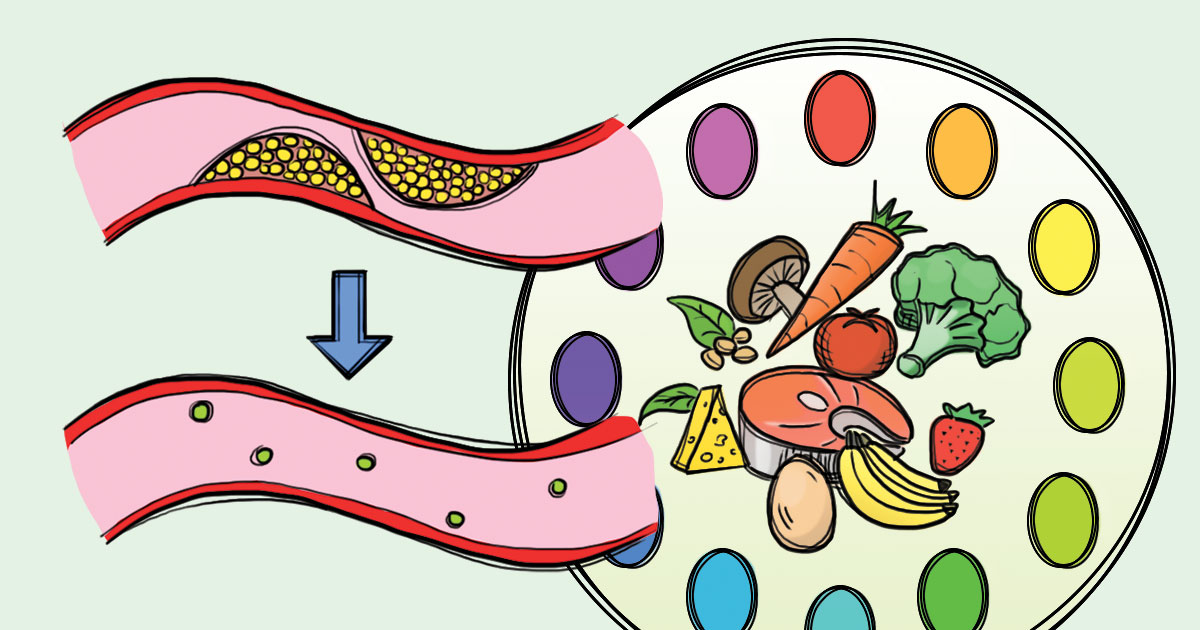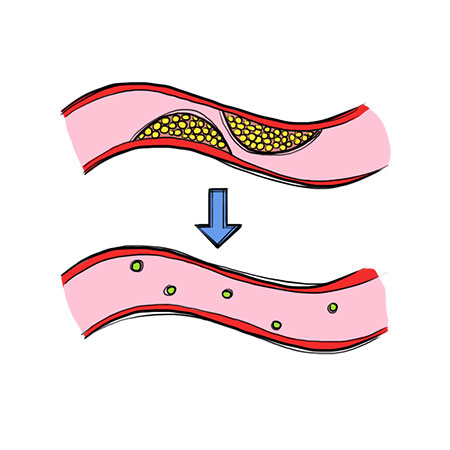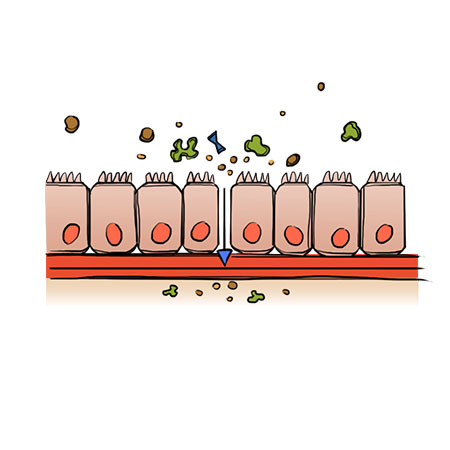In our society today, many individuals turn to packaged, processed foods, complaining of little time to prepare healthy meals. Perhaps it is no coincidence that as more and more people turn to convenience foods, the wellness of our nation as a whole is getting worse instead of getting better. According to a number of health experts, the lack of carefully prepared whole foods has contributed the increasing prevalence of obesity, diabetes, and other chronic diseases. If your diet does in fact impact your health status, and you are battling with your own health issues or concerned about your risk of disease, how can the Paleo diet benefit your condition and overall health?

Inflammation as an Outcome of Your Diet
Keep in mind that a number of chronic diseases are now believed to be the result of unresolved chronic inflammation, which can spread throughout the body, causing damage to almost all of your cells and organs, including your heart and liver.
 Many health professionals now realize that addressing underlying pro-inflammatory dietary practices can be a fundamental key to recovery. Based upon that belief, nutrition researchers and even some doctors are suggesting the return to simpler diets that revolve around the following foods:
Many health professionals now realize that addressing underlying pro-inflammatory dietary practices can be a fundamental key to recovery. Based upon that belief, nutrition researchers and even some doctors are suggesting the return to simpler diets that revolve around the following foods:
- grass-fed and free-range animal products
- fresh seafood
- whole fruit
- fresh vegetables
- seeds, and
- nuts.
As you may already know the Paleo diet, often referred to as the Hunter-Gatherer Diet, is a healthy eating plan that revolves around the very foods listed above.
Why Paleo?
According to data from 2013, the Paleo diet was one of the world’s most searched diets via the internet due its rising popularity over the last few years, though it remains controversial among the healthcare community and many mainstream nutrition organizations.
While you may come across a number of versions of the Paleo diet, most versions call for the elimination of grains (i.e. wheat, rye, and barley) or legumes (i.e. beans). Dairy is a bit controversial in terms of being an acceptable food on the diet as well, though the versions of the diet that do allow dairy stress that the dairy you incorporate needs to be from grass-fed cows or purchased in its “raw” form.
 It is also recommended to eliminate all forms of processed fats, including vegetable oil and soybean oil. Acceptable oils to use in place of the processed fats mentioned include flaxseed, walnut, macadamia, avocado, olive, and coconut oil.
It is also recommended to eliminate all forms of processed fats, including vegetable oil and soybean oil. Acceptable oils to use in place of the processed fats mentioned include flaxseed, walnut, macadamia, avocado, olive, and coconut oil.
Although nothing is perfect, ultimately the main focus of the Paleo diet is to avoid foods that can potentially harm your health. It places emphasis on eating whole, real foods, and this alone can help to reduce your risk of disease. As it has been said, “let food be thy medicine.”
Scientific Support
Whether you have embraced the Paleo diet as healthy or feel it may be harmful, science and research has shown that it can be helpful to treating a number of conditions.
Clinical trials have shown that the Paleo Diet can be an optimal lifestyle plan, helping to lower the risk of cardiovascular disease, high blood pressure, markers of inflammation, and obesity.
“It therefore seems prudent for modern-day humans to remember their evolutionary heritage and to increase their intake of vegetables and fruits and to decrease their intake of animal fats and domesticated grains. The Paleolithic diet might be the best antidote to the unhealthy Western diet.”(1)
For more specific conditions and potential disease states that the Paleo diet can beneficially treat, take a look at the following list of health concerns and draw your own conclusions:
1. Leaky Gut
“The gut is the gateway to health. If your gut is healthy, chances are that you’re in good health.”
The term “leaky gut” may sound a little silly, but it actually is a rather serious condition.
 Your gut is naturally permeable to very small molecules and vital nutrients. Leaky gut refers to the process of damage that occurs to the over time, making it much more permeable to harmful substances such as toxins, microbes, and waste products.
Your gut is naturally permeable to very small molecules and vital nutrients. Leaky gut refers to the process of damage that occurs to the over time, making it much more permeable to harmful substances such as toxins, microbes, and waste products.
As these harmful substances enter into the blood stream, the body initiates an immune system reaction, which may present simply as generalized inflammation to something more serious as an autoimmune reaction.
No matter the severity of the response, leaky gut stimulates the immune system in some way that leads to symptoms such as poor digestion, hormonal imbalance, or allergies. (2) Researchers now believe that leaky gut may even be a prerequisite in the development of autoimmune diseases such as multiple sclerosis and rheumatoid arthritis. (3)
As this report indicates, a bolus of blood sugar upon consumption of a meal or snack containing refined carbohydrates increases levels of inflammatory messengers called cytokines. Cytokines are the cell signalling molecules that play a part in cell to cell communication, stimulating the movement of cells towards sites of inflammation, inflammation that can occur in the gut.
If you are already following mostly a Paleo diet, you may be controlling your level of gut inflammation (hence your cytokine level) without even knowing it. On the other hand, if you follow more of a modified Paleo diet, and still incorporate refined carbohydrates now and then, elimination may be your best bet.
How will you know if you have leaky gut? Symptoms of leaky gut may include:
- Gas, bloating, diarrhea, or irritable bowel syndrome
- Hormonal imbalances, particularly in women, including PMS or PCOS
- Autoimmune diseases (i.e. Hashimoto’s thyroiditis, lupus, psoriasis, or celiac disease)
- Poor mood regulation leading to anxiety, depression, or ADD
- Skin issues (i.e. acne, rosacea, or eczema)
- Food allergies or intolerances
While the symptoms listed above are not necessarily indicative of leaky gut, if you suffer from any of the above issues, it may be time to take a closer look at your diet to see if there are inflammatory foods working their way into your diet.
If you feel your diet is already fairly pristine, there are other aspects of your health that require careful consideration including the quality of your sleep, your stress level, and finding time for restorative or gentle exercise.
Finally, keep in mind that it can take at least six months for the gut to completely heal depending on the severity of the damage. If you are looking at the Paleo diet as more of a lifestyle change when trying to heal your gut, than you are on the right track. The word “diet” tends to imply a temporary change or quick fix, and unfortunately, improving the health of your gut takes time.
2. Blood Sugar Dysregulation
Foods with a high glycemic index appear to have a pro-inflammatory effect, while the low glycemic foods associated with the Paleo Diet help to address inflammation. Through this targeted benefit, lower insulin levels may result.
When you consume healthy sources of carbohydrates coupled with good fats and high quality protein, glucose (i.e. sugar) from the carbohydrates enters into your blood stream slowly, allowing the pancreas to respond appropriately with adequate insulin secretion. When insulin is released appropriately, glucose enters into your cells to be used for energy; however, when insulin is produced in excess, inflammation can result.
If that seems a little difficult to comprehend, then think of it this way:
“Well-regulated blood sugar is similar to that of driving a luxury car. There’s a controlled insulin response to glucose (pressing the gas pedal). Insulin receptors are sensitive and ready to receive insulin and glucose (acceleration). Insulin and glucose are shuttled to the cells and the liver and levels steadily decline (releasing the gas pedal).”
 Insulin resistance increases one’s risk of developing type 2 diabetes or prediabetes. Although insulin resistance on its own does not cause type 2 diabetes, it frequently sets the stage for development of the disease by placing a high demand on the insulin-producing beta cells. This in turn causes blood glucose levels to rise above the normal range.
Insulin resistance increases one’s risk of developing type 2 diabetes or prediabetes. Although insulin resistance on its own does not cause type 2 diabetes, it frequently sets the stage for development of the disease by placing a high demand on the insulin-producing beta cells. This in turn causes blood glucose levels to rise above the normal range.
For scientific evidence of how the Paleo diet may help to regulate blood sugar and insulin resistance, consider a study tracking 13 individuals already diagnosed with type 2 diabetes. Researchers wanted to determine if the Paleo diet would be more effective than the typical “Diabetes diet” as a cross-over study. As part of the investigation, the subjects were placed on each diet, separately, for a consecutive 3 months. (4)
Analysis of the data revealed that while on the Paleo diet, participants lost 6.6 lbs more and reduced their waist circumference by an additional 4 cm off of their waistlines when compared to the results documented after following the Diabetes diet.
In addition to the weight loss and waist circumference improvements, individuals improved the following lab values:
- HbA1c (a marker for 3-month blood sugar levels) – decreased by 4% with the Paleo diet
- HDL (good cholesterol) – increased by 3 mg/dL with the Paleo diet
- Triglycerides- decreased by 35 mg/dL with the Paleo diet
Another small study published in the journal Diabetologia reported that the Paleo diet improved blood sugar over 12 weeks compared to the Mediterranean diet, which allows grains, low-fat dairy, and oils. (5)
Based upon these studies, it appears that the Paleo diet is a more effective approach in controlling blood sugar than diets that include more carbohydrates; however, given the small sample size of the subject groups, researchers are continuing to conduct studies to see how this applies to a larger population size.
Regardless of what science might say, your body will inform you of how much energy you require each day, and your body will also let you know if your fuel source is inappropriate through wide blood sugar swings. If this happens for a long period of time, and you find your weight increasing slowly, you are increasing your risk for the development of insulin resistance, at which point your cells will not be able to use the energy consumed from food appropriately.
3. High Blood Pressure and High Cholesterol or Triglycerides
The standardized, contemporary American diet plays a central role in the pathogenesis of numerous chronic diseases that are sometimes referred to as “diseases of civilization”.
Because of this, researchers are now interested in the investigation of how a “hunter-gather” diet, similar to what our Paleothithic ancestors followed, could lead to various improvements in health, including proper regulation of blood pressure and maintenance of a healthy cholesterol level.
Heart disease is one of the leading causes of mortality among both genders, with approximately 1/3 of all deaths occurring as a result of this condition. Unfortunately many of the popular treatments including medications and dietary prescriptions fail to properly treat cardiac risk factors or issues that can go on to increase the risk of heart disease.
As a result of the rising numbers of individuals living with abnormal lab values or heart conditions that could eventually lead to more serious health consequences, researchers remain interested in learning more about the cause and cure for heart disease.
Within recent years, scientists have supported the idea that chronic inflammation is a primary risk factor for development of the disease, and it is hopefully now clear through reading this post that one’s diet can be a factor in the development of inflammation.
The Paleo diet is believed to be an effective nutritional approach in helping the body to heal without any invasive treatments or harmful medications. Many individuals start their journey into Paleo as a way to control inflammation as a natural and effective means to improve their health.
Some doctors specializing in functional medicine have even labeled the Paleo diet as the “anti-inflammatory diet.” If you aren’t familiar with the field of functional medicine, perhaps the following quote will shed some light on this medical philosophy:
“Functional medicine is a different way of thinking about disease that helps us understand and treat the real causes of inflammation instead of finding clever ways to shut it down. Medicine as it is practiced today is like taking the battery out of a smoke detector while a fire burns down your house!”
To better understand how the Paleo diet can impact cardiac risk factors, one small study tracking 9 “healthy” individuals, sought out to track changes in one’s health status after being placed on a Paleo diet for 10 days. After a little less than 2 weeks following this dietary approach, researchers found that cardiac labs, including cholesterol, showed improvements even in such a small amount of time.
It is important to note that all individuals were placed on a calorie controlled diet to ensure that weight loss could not factor into health improvements. (6) At the end of study, data analysis revealed:

- Total Cholesterol – decreased by 16%.
- LDL Cholesterol – decreased by 22%.
- Triglycerides – decreased by 35%.
- Diastolic Blood Pressure – decreased by 3.4 mmHg.
In yet another study, researchers hypothesized that a grain-free Paleo diet a healthier cholesterol profile, as well as weight loss, when compared to a traditional “heart-healthy” diet.
Ten male and ten female volunteers (20 total subjects), aged 40 to 62, took part in the study. All subjects had been diagnosed with high cholesterol, but were not taking any medications to treat their condition. They adhered to a traditional heart-healthy diet for four months, followed by a Paleo diet for four months. (7)
After 4 months on the Paleo diet, data analysis revealed that the Paleo diet significantly lowered total cholesterol, LDL cholesterol (i.e. bad cholesterol) and triglycerides, while increasing beneficial HDL cholesterol (i.e. good cholesterol), relative to both baseline and the low-fat, whole-grain diet.
Upon conclusion of the study, the researchers stated, “Paleolithic nutrition offers promising potential for nutritional management of [high cholesterol] in adults whose lipid profiles have not improved after following more traditional heart-healthy dietary recommendations.” Once again, the Paleo diet was not harmful, but rather helpful in improving the health status of the subjects followed.
4. Overweight, “Over fat”, or Obesity
Your body is a complicated machine, operating on so many different levels, day and night. While the body sometimes works in mysterious ways, it is well documented that the body’s ability to store fat is a built in system for survival.
 In the paleolithic era, when individuals were forced to “hunt and gather” for food, there were days filled with feasts and days filled with famine. In the case of famine, your body is designed to survive for fairly long periods without food, using your fat cells as a backup source of energy.
In the paleolithic era, when individuals were forced to “hunt and gather” for food, there were days filled with feasts and days filled with famine. In the case of famine, your body is designed to survive for fairly long periods without food, using your fat cells as a backup source of energy.
Today’s society, as you well know, is much different. It seems many individuals spend their days feasting, day after day. It is no wonder the percentage of individuals categorized as overweight, “overfat”, and obese is consistently on the rise.
Because the Paleo diet incorporates a fairly high percentage of protein, you may not feel the need to spend your days feasting as protein as rather satiating, particularly in comparison to carbohydrates. (8)
Aside from the positive effect of protein in managing your hunger and appetite, protein is also very anabolic. This means the macronutrient is used for building new cells that contribute to increased muscle mass.
The more muscle you have the better your metabolism as muscle requires greater amounts of energy (i.e. calories) than fat. As you increase your muscle mass percentage and shrink fat cells, extra energy will be transported to glycogen in your muscles instead of triglycerides in your fat cells.
As triglycerides are stored within a cell and accumulates, the fatty molecules contained within the cell expand, resulting in an increase in the cell’s diameter. When enough fat cells in a particular body region enlarge and cluster, that part of the body begins to become “overfat.”
“Being overweight or obesity is more than a cosmetic issue. It is clear that being over-fat and/or obese is unhealthy, as well as a major risk factor for many diseases, including diabetes, high blood pressure, dyslipidemia (high triglycerides, high LDL and low HDL), sleep apnea, arthritis, heart disease, and cancer.”
Even in the absence of how protein produces an anabolic effect in the body, the quality of the foods ingested as part of a Paleo diet allows for the nutrients to be effectively converted into energy for more immediate use rather than being stored for long-term energy.
Paleo diets appear to cause strong tissue-specific effects fat deposition of the liver and positively impact one’s waist circumference. One study of 10 healthy women, all with a BMI greater than 27, tracked the diet’s effects on liver fat, muscle cell fat, and insulin sensitivity over 5 weeks as subjects followed a “modified” Paleo diet. (9)
After 5 weeks, the women had lost an average of nearly 10 pounds, and had just over a 3 inch reduction in their waist circumference. In addition, the average fat reduction of the liver was 49%. The reduction in liver fat is particularly impressive considering that the fat content of the liver is an independent risk factor for metabolic disease.
Furthermore, according to this study, the Paleo diet produced superior results for weight loss compared to a low fat, high carbohydrate diet over the course of 18 months. Measurements for body fat, waist circumference and abdominal diameter at the 6 month mark were superior in the Paleo diet compared to those following a low fat, high carbohydrate diet.
Your reasons for going Paleo, or considering the conversion, may stem from a desire to reduce your risk of disease or better manage your weight. With its well-documented anti-inflammation powers, the Paleo diet can help you to maintain a healthy weight, lose weight, or improve your body composition.
Unlike the Standard American Diet (SAD), leading to a population where two out of three adults in the U.S. are obese or overweight, the Paleo diet shows great promise in not only improving your body weight, but also altering your internal composition including the fat that surrounds your critical organs.
Take Home Message on the Benefits of the Paleo Diet
The Paleo diet is helpful in correcting and reversing the many underlying pro-inflammatory modern dietary practices.
Given that a number of chronic diseases are now believed to be the result of unresolved chronic inflammation, which can spread throughout the body, the Paleo diet appears to help protect the health of almost all of your cells and organs, including your heart and liver.
 The Paleo diet has been linked to a number of health benefits through the reduction of food products that have been implicated in the inflammatory basis of disease, including dairy products, refined sugar, beans, grains, and legumes. Research has shown that it is more effective in managing diabetes and heart disease, in comparison to more traditional diets such as “heart-healthy” or “diabetic diet” eating plans.
The Paleo diet has been linked to a number of health benefits through the reduction of food products that have been implicated in the inflammatory basis of disease, including dairy products, refined sugar, beans, grains, and legumes. Research has shown that it is more effective in managing diabetes and heart disease, in comparison to more traditional diets such as “heart-healthy” or “diabetic diet” eating plans.
Although nothing is perfect, ultimately the main focus of the Paleo diet is to avoid foods that can potentially harm your health. By placing the emphasis on eating whole, real foods, and you are naturally supporting the process of disease risk reduction.
If you aren’t already suffering from any of the above mentioned conditions, the Paleo diet may be your key to prevention, keeping you healthy for years to come. For more information on additional ways the Paleo diet can benefit your health, check out this link.
4 Paleo Diet Benefits for Serious Health Conditions
Stacey (RD, CHFS, Certified Integrative Health Coach)
0 Comments